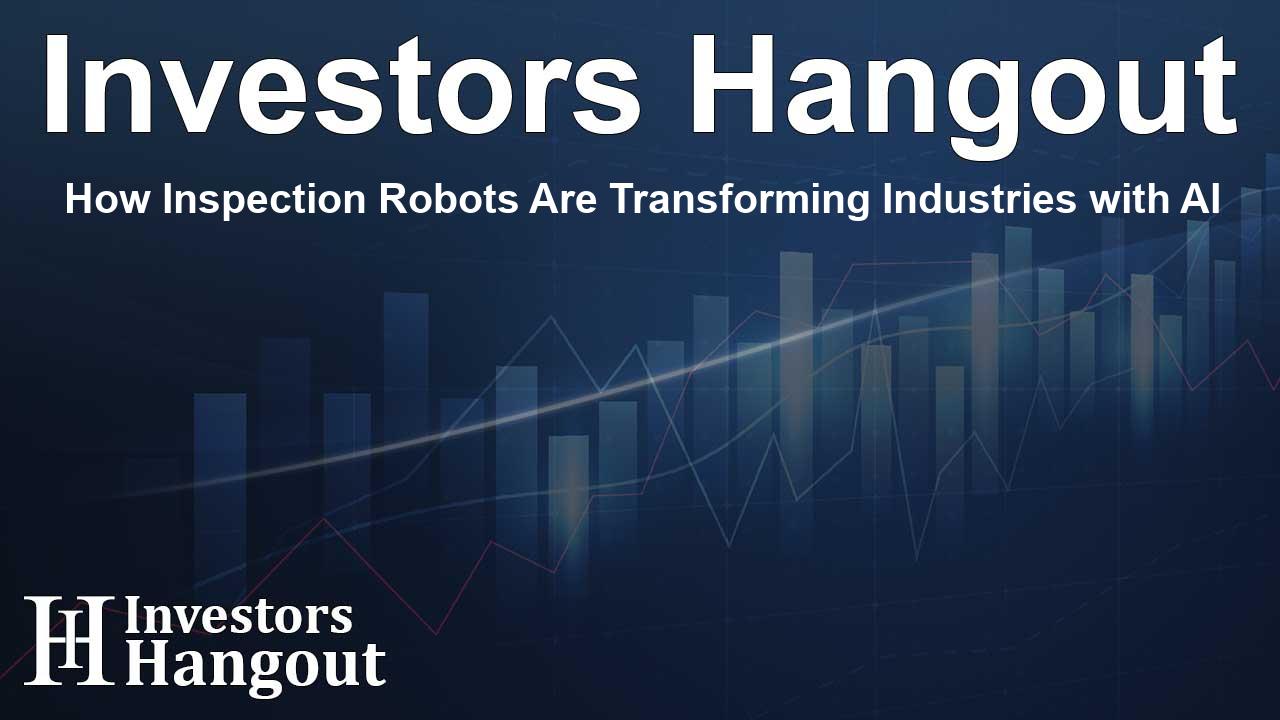How Inspection Robots Are Transforming Industries with AI

Exploring the Rise of the Inspection Robots Market
The inspection robots market is set to witness remarkable growth, with estimates highlighting an increase of USD 5.70 billion between 2024 and 2028. This surge signals a burgeoning trend in automation bolstered by advancements in artificial intelligence (AI) and cloud technologies.
Market Growth Drivers
The shift to cloud-based solutions plays a pivotal role in this growth. By employing cloud technologies, inspection robots are becoming more efficient and reliable. These robots not only secure data but also allow for smooth collaboration across teams facilitating real-time access to vital inspection information from anywhere.
Significance of Cloud in Robotics
This market transformation brings several advantages, including enhanced data processing capabilities and predictive maintenance features through detailed analysis of past inspections. Stakeholders can stay updated with ongoing processes, which increases efficiency and supports proactive decision-making.
Impact on Worker Safety and Employment
As industries across the board increasingly adopt inspection robots, worker safety is sharpening its focus. These robots are equipped with sophisticated sensors and cameras to collect essential data from environments that are typically hazardous or challenging for human workers. This trend reflects a growing understanding of the need for human-robot collaboration, where robots take on high-risk tasks, allowing people to focus on more complex jobs.
Training and Implementation Considerations
The transition towards automation involving inspection robots does carry initial costs, including investments in training and equipment. However, the anticipated long-term rewards are considerable, such as improving operational efficiency, fostering job security through employee upskilling, and deriving insights from real-time data for better planning.
Market Challenges to Overcome
Despite the promising growth trajectory, the inspection robots market is not without its challenges. Economic setbacks and the workforce's readiness for technological adoption can serve as roadblocks. Concerns about robots undermining job security in traditional sectors are prompting discussions and strategies aimed at minimizing such impacts.
Safety and Operational Risks
There are also operational challenges, including the safety of robotic systems themselves, as incidents can occur during their functions. Thus, ensuring that robust safety standards and proper training are in place is fundamental as industries integrate these technologies into their practices.
Segmentation of the Inspection Robots Market
The inspection robots market can be divided into various segments, including types such as remotely operated vehicles (ROVs) and autonomous robots, along with various end-users, from oil and gas sectors to pharmaceuticals. The geographical spread of the market covers diverse regions that have unique demands and challenges that drive market strategies.
Future of Inspection Robots in Industry
Looking forward, the inspection robots landscape seems ripe for innovation. Companies specializing in robotics are now focusing on developing advanced models equipped with AI capabilities for improved inspection accuracy. The integration of technologies like lidar and machine learning might also enhance their operational potential, aiding industries in maintaining high standards of quality and safety.
Adapting to Technological Changes
As industries adapt to these technological changes, it's crucial to address the educational needs of the existing workforce, preparing them for a synergistic relationship with robots. The ongoing evolution signifies a shift towards a future where human oversight and machine efficiency coexist, driving productivity and quality enhancements.
Frequently Asked Questions
What is the expected growth of the inspection robots market?
The inspection robots market is projected to grow by USD 5.70 billion from 2024 to 2028, indicating a robust expansion influenced by technology improvements.
How are cloud technologies impacting inspection robots?
Cloud technologies enhance data accessibility, promote real-time collaborative efforts among teams, and improve overall operational efficiency in inspections.
What challenges does the inspection robots market face?
Challenges include concerns over job displacement, safety risks during operation, economic pressures, and the need for effective training programs for employees.
In which sectors are inspection robots widely utilized?
Inspection robots are increasingly used in sectors like oil and gas, construction, pharmaceuticals, and manufacturing, driven by the need for safety and efficiency.
What is the future outlook for inspection robots?
The future looks promising, with continuous innovations expected in AI and many industries recognizing the value of integrating inspection robots into their workflows.
About Investors Hangout
Investors Hangout is a leading online stock forum for financial discussion and learning, offering a wide range of free tools and resources. It draws in traders of all levels, who exchange market knowledge, investigate trading tactics, and keep an eye on industry developments in real time. Featuring financial articles, stock message boards, quotes, charts, company profiles, and live news updates. Through cooperative learning and a wealth of informational resources, it helps users from novices creating their first portfolios to experts honing their techniques. Join Investors Hangout today: https://investorshangout.com/
Disclaimer: The content of this article is solely for general informational purposes only; it does not represent legal, financial, or investment advice. Investors Hangout does not offer financial advice; the author is not a licensed financial advisor. Consult a qualified advisor before making any financial or investment decisions based on this article. The author's interpretation of publicly available data shapes the opinions presented here; as a result, they should not be taken as advice to purchase, sell, or hold any securities mentioned or any other investments. The author does not guarantee the accuracy, completeness, or timeliness of any material, providing it "as is." Information and market conditions may change; past performance is not indicative of future outcomes. If any of the material offered here is inaccurate, please contact us for corrections.